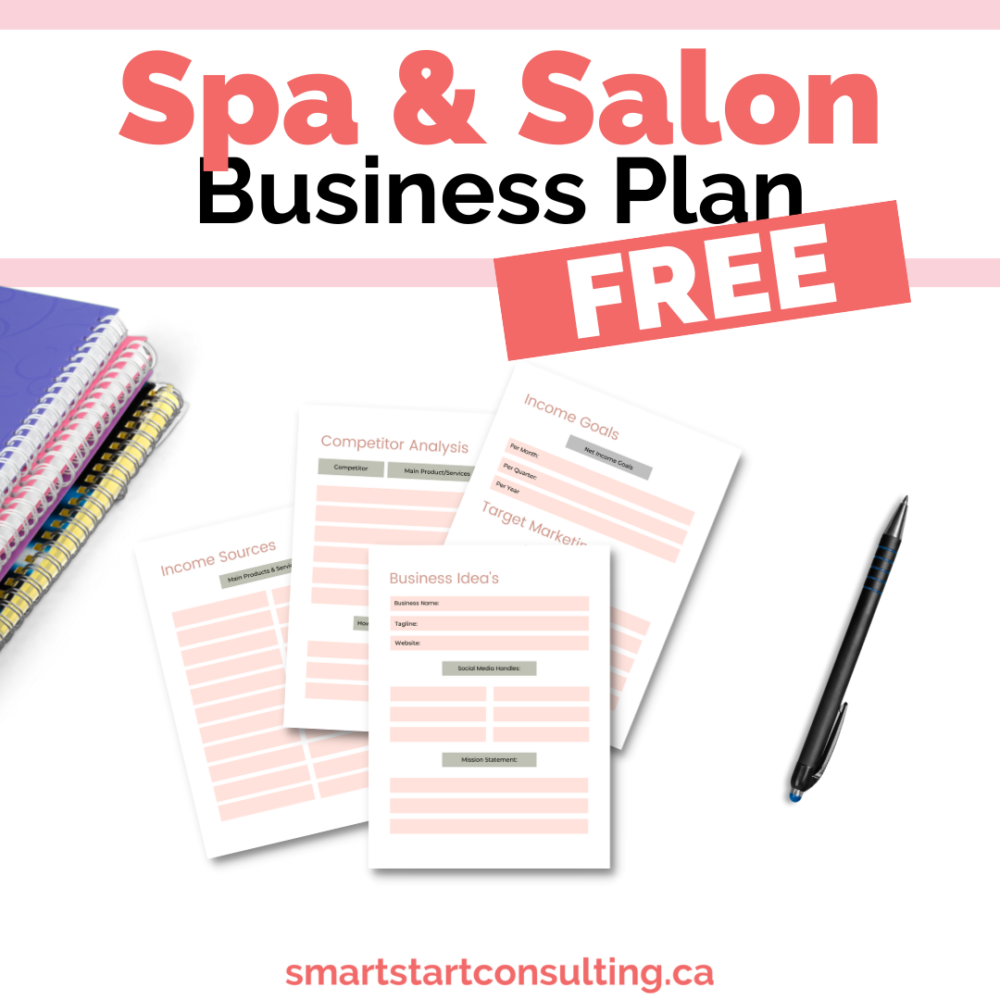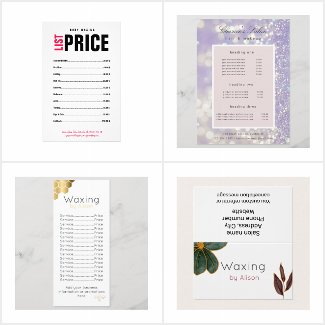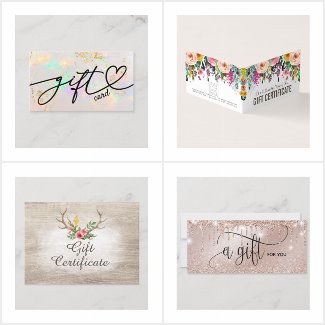The practical guide to starting an esthetics business
How I quit my spa job and started a successful solo esthetician career
[lwptoc]
Thirteen years ago, I graduated from esthetics school. I immediately went to work for a day spa that offered me a job. I was so pumped up and excited that I didn’t even take one day off to relax between school and my new job.
After the first year, I realized that I was in this for a career. But the rest of the estheticians there were in it for something to do until they decided what they wanted to take in college.
Because this was my “forever” career, I worked hard. It took all kinds of continuing education and courses (on my own time and paid for with my own money. ) I was the top esthetician at the spa. I made the most sales, was regularly booked, and my clients spent the most money.
The owners treated me like a moneymaker. I was a valuable employee, and they saw me (and treated me) as a revenue source. It’s hurt.
Many of my clients started asking if I would open my spa. After years of working with the other staff, I realized I would never want to work for or manage anyone. I wanted to become a self-employed solo esthetician.
I was a single mom. I didn’t have the luxury to give 2 weeks’ notice and start my own business from scratch, so I needed to make a plan.
Over 6 months, and with my boyfriend’s and family’s help, I set my goal to become self-employed. From day one, I needed to succeed, so I had to create a strategy.
When an opportunity to rent a room at a hair salon came open, I took it. I was ready. Within a few months, I made more than I had at the day spa.
The hair salon was fine, but I wanted even more control, so my boyfriend and I decided to buy a house. After a long search, we found the perfect house where I could start my home-based business in a separate room.
After many years of helping my friends start their businesses, I wrote this blog post: The practical guide to starting an esthetics business. I have had a lot of success in my business, and I hope that with the help of this blog post, your will too!
Let’s dive right in:
Why you need to read this blog post
This blog post will help you with your journey to self-employment freedom. I wrote it to help you succeed at self-employment, whether it be in a room rent situation or work from home situation.
What is in this blog post
You will learn tricks and tools and get other resources to help you start your esthetics or spa business from scratch or move from a current spa or salon job and transition to working for yourself. You will also get access to a FREE business plan template.
Why do you want to leave your job now?
Remember when you went to beauty or spa school? Your teachers and peers filled your head with all the fantastic things you could do when you launched your career. But after working in your new spa job, you discovered many things that no one ever told you about.
Wages can be terrible, cattiness among employees can drive you nuts, and you have no control over your schedule. If you want to be in control of every single aspect of your job, then continue reading this post.
What to do if you are quitting a job
If you are working at another spa or salon, you must be careful about how and when you decide to give notice to your employer. You should keep quiet about your plans to start your own business.
Your current employers might not want to keep you around if they find out you plan to leave. Read through this blog post to learn what you should have in place before you quit.
How to start a spa or salon solo business if you are a new graduate
You’ll find this blog post helpful if you are in the middle of your beauty school training. It will give you an extensive list of what you must do before starting your business.
*Tip– If you are still in school, check out our blog post on study guides!
How to start your new esthetics business
Review Your Employment Contract
Before diving into your new venture, double-check your current employment contract. Some contracts have non-compete clauses, restricting where you can work after leaving. This often means staying a certain distance from your current employer for a specified time. If you find such a clause, it’s wise to consult a lawyer or check with local labor standards to understand its implications. Better safe than sorry!
Invest in a Business Planner for a Streamlined Organization
As you embark on your esthetics business journey, organization is key. One effective way to keep everything on track is by investing in a specialized business planner. These planners are designed to help you manage your business more professionally and efficiently.
Why Choose a Business Planner?
- Customized for Your Needs: Platforms like Etsy offer a variety of business planners tailored to niche businesses, including esthetics.
- Comprehensive Organization: These planners typically include sections for financial tracking, client appointments, daily schedules, and more.
- Time Saver: With a structured approach, you’ll spend less time organizing and more time focusing on your clients and services.
While this blog post provides a solid starting point, a detailed business planner can be a game-changer in your entrepreneurial journey. It’s not just about keeping records; it’s about having a clear roadmap for your business’s growth and success.
Consider exploring Etsy for business planners that resonate with your specific needs. We wrote a blog post dedicated to this. This small investment can lead to greater efficiency and, ultimately, a more successful business.
If you are not ready to purchase a full one yet, ( they are really inexpensive) we have a free one you can use!
Find a location where you will be working.
- Do you want to be home-based? Working from home is twice as hard as going to a separate building. Yes, it is nice to make your hours, but scraping ice off the sidewalk in -40 weather is not nice.
- Do you want to rent space out of a salon or spa? You will get some benefits of being self-employed but will have a few things to consider, like shared laundry, opening hours, etc.
Creating Your Comprehensive Start-up Checklist
When planning your esthetics business, creating a detailed list of everything you need is crucial. This includes all physical products, from implements and linens to cleaning supplies. Be thorough and think of every possible necessity.
Essential Start-Up Items:
- Licenses and permits
- Large and small equipment
- Insurance
- Print products
- Implements
- Back bar items
- Rent and renovation costs
- Cleaning supplies
- Disposables
- Website setup
- Utilities
- Online booking system
- Branding and logo design
I’ll provide a list of recommended supplies and resources at the end of this post.
Smart Shopping Tips:
- Explore online and second-hand options. Auctions or stores closing down can offer valuable finds at lower prices.
- Be vigilant about cost-saving opportunities.
Keep Impeccable Records:
- Always get a receipt for each purchase.
- Ensure the receipt includes the date, item description, seller details, price, and taxes.
- These details are vital for tax records and any potential warranty or repair needs.
Storage and Shelf Life Considerations:
- Buy only what you can store efficiently.
- Avoid items with a short shelf life. Purchase products and cleaning supplies closer to your opening date to ensure freshness.
Remember, smart planning and purchasing set the foundation for a successful esthetics business launch!
Start Saving Money Now for a Smooth Start
Embarking on your esthetics business? Begin by tightening your budget. For the next two months, focus on saving as much as you can. This step is crucial for two reasons: covering some of your initial bills and purchasing necessary products before opening your doors.
Aim to launch your business with minimal financial stress. By having savings, you shift money worries to the back burner, enabling a more focused and confident start.
Consider boosting your savings further by taking on a part-time job or seeking overtime at your current workplace. Every extra dollar saved is an investment in the seamless launch of your dream business.
Learn from Others’ Mistakes
One invaluable resource I wish I had when starting? Podcasts from industry experts. The insights and real-life experiences shared by seasoned professionals can be a goldmine of information. They often discuss the mistakes they made and the lessons learned, which can save you from repeating the same errors.
I strongly recommend finding podcasts focused on esthetics and beauty business start-ups. They’re not only informative but also incredibly inspiring. You can find a curated list of some excellent podcasts I’ve found helpful [HERE]. Remember, learning from others’ experiences is a smart way to sidestep common pitfalls and accelerate your journey to success.
Start Building Your Portfolio
Create a portfolio to showcase your esthetics work:
- Your Work: High-quality images of your services.
- Your Workspace: Photos of your setup and ambiance.
- Product Highlights: Display the products you use.
Quality Matters: Ensure images are professional and high-quality.
Photography Tips: Google photography tips for your phone model for better shots.
A strong portfolio is key for social media, attracting clients, and defining your brand.
Conduct Thorough Market Research
Understanding your competition is crucial before launching your esthetics business. Market research is not just about knowing who’s out there; it’s about identifying how you can carve out your unique space in the industry.
Key Aspects of Market Research:
- Identify Competitors: Look into businesses nearby that offer similar services. What are their specializations and price points?
- Analyze Their Offerings: Note if they provide services related to yours and how they market them.
- Compare and Contrast: How do you stack up against these businesses? What makes your services unique or different?
Evaluating Your Niche and Demand:
- Find Your Specialty: Is there a specific niche within esthetics that you can excel in? Specializing can set you apart from the competition.
- Assess Local Demand: Determine if there’s enough demand in your chosen area. Are people looking for the services you plan to offer?
- Check Credentials: Investigate the qualifications and credentials of others offering similar services. This insight can help you position yourself effectively in the market.
Remember, thorough market research not only informs you about your competitors but also provides insights into potential gaps you can fill. It’s about finding your unique selling proposition that resonates with your target audience.
Understanding Licensing and Health Regulations
Navigating the regulatory landscape is critical in setting up your esthetics business. Ensuring compliance with licensing and health regulations is legal and builds trust with your clients.
Steps to Ensure Compliance:
- Identify Requirements:
- Start by making a comprehensive list of all the requirements relevant to your business. This includes licensing, business structure, tax information, and operational conditions.
Consider Your Business Location:
-
- The requirements can vary depending on whether you are renting a space in a salon or spa, or operating from home. Each scenario may have different licensing and approval processes.
Key Licenses and Registrations:
-
- Tax Licenses: Ensure you have the necessary federal and local tax licenses.
- Health Regulations: Adhere to health and safety standards specific to esthetics and beauty services.
- Local Regulations: Comply with any city or town-specific regulations.
- Professional Licensing: Obtain any required licenses from professional esthetician bodies.
Business Registration:
-
- You may need to register your business with the government to record your business name and structure.
Remember, staying informed and compliant with these regulations protects your business and enhances your professionalism and credibility. Take the time to check off each requirement methodically as you prepare for your business launch. Sign up for email from each company to get updates right to your inbox.
Budget Planning for Monthly Expenses
Drafting a budget is key for your esthetics business. Here’s what to include:
- Operating Costs: Cover everyday business activities.
- Rent: Whether it’s your home or a rented space.
- Product Costs: Factor in skincare and other supplies.
- Utilities: Include power and other essential services.
- Insurance: Crucial for risk management.
- Web and Phone: Costs for digital presence and communication.
- Online Booking/POS System: For appointments and transactions.
Remember, a contingency fund for unexpected expenses is vital. This concise budgeting approach ensures financial readiness for your business operations.
FreshBooks is an excellent accounting and financial planning program and is easy to use!
This is who we recommend for insurance:
Setting Up Business Bank Accounts and Financial Systems
Business Banking Essentials:
- Bank Appointment: Schedule one to open your business account.
- Essential Tools: Get business checks, a deposit book, and a business card.
- Deposit Know-How: Banks offer guidance on deposit procedures.
- Utilize Bank Resources: Look into small business classes and other free tools.
- Online Management: Set up your account online for ease.
Choosing Payment Methods:
Accept cash, checks, email transfers, credit cards, or gift certificates. Cash saves on processing fees.
Credit Card Processing:
Why Square? It’s great for small businesses – simple and cost-effective. Yes, there are fees, but you can offset these by encouraging cash payments. Remember to track these fees for tax deductions. Square also has free booking software and links with FreshBooks.
Setting Up Accounting:
- Local Regulations: Understand government requirements for record keeping.
Proper financial setup is not just about compliance; it’s about streamlining your business for success.
FreshBooks and Square link together! No matter what software you choose, check to see that they link together. This can often save a lot of time in accounting.
We think you should check out Square. They are an excellent, easy-to-use credit card processing system for small businesses. They are inexpensive and easy to use. It does cost fees to use them. You might want to politely ask clients to pay cash so that you can avoid these fees. You should be able to write these fees off as a business expense, so make sure you keep track of them.
Setting the Right Prices for Your Services
Pricing is a critical aspect of your esthetics business. It’s challenging, but there are resources to help. I found great guidance in Tina Alberino’s book, “The Beauty Industry Survival Guide: A Salon Professional’s Handbook.” Her pricing strategy is practical and industry-specific. I recommend this book to anyone in the beauty industry for clear, actionable advice on pricing your services effectively.
*Tip: Check out these free training modules. They go more into detail about retail calculations.
Choosing and Registering Your Business Name
Selecting a business name is more than a creative process; it’s a legal necessity. Here’s what to do:
- Register with Authorities: Once you’ve chosen a name, register it with your local business authority or government. This step is crucial for legal protection and to avoid potential lawsuits.
- Check Availability: Ensure the name is available across all social media platforms. Consistency in your business name online enhances brand recognition and credibility.
Remember, a well-chosen and legally registered business name is a key step in establishing your presence in the esthetics industry.
*Tip: This free module goes into detail about how you can register your name with the government. (Canada)
Creating Your Logo and Brand Identity
Develop a unique logo and brand for your esthetics business. Start with a mood board to visualize your brand’s aesthetic. This can include colors, fonts, and imagery that represent your business’s essence. Etsy is a great resource for custom logo designs and branding kits. A strong, cohesive brand identity helps your business stand out and resonate with your target audience.
If you are currently employed at another salon or spa business, you must not give away any information that people may use to connect you to the company. You don’t want your employer to get wind that you are leaving. If they do, they may fire you so you won’t “Take their clients.”

Building Your Business Website
A website is an essential tool for your esthetics business. It’s often the first point of contact with potential clients, so making a great impression is key.
- Choose a Platform: I recommend Weebly for its ease of use and customization options. It’s user-friendly and perfect for beginners, plus you can start with a free version to get a feel for it.
- Explore Etsy: Etsy is another great resource, especially if you’re looking for unique, professional website designs. They offer a range of templates and customization options suitable for the beauty industry.
Remember, your website is your online storefront. Make it inviting, informative, and reflective of your brand’s ethos.
*Tip: Amazon also has fantastic deals on some of their “basics” like sheets and towels.
*Tip: If you have any friends who are already in the industry and are using online scheduling, ask them if they have a referral link. You might get a better deal.
Navigating Taxes in the Esthetics Business
When it comes to taxes in your esthetics venture, consider getting an accountant, especially in the early years. Tax laws can be complex, and a professional can ensure you’re on the right track and maximizing deductions.
Sometimes, accounting software comes with free tax management. Check!
For the tech-savvy, there’s accounting software that simplifies tax calculations. A popular choice is QuickBooks – it’s user-friendly and tailored for small businesses.
Remember, investing in proper tax management early on can save you time and headaches down the line, letting you focus on what you do best – beautifying your clients!
Finalize designs for cards and brochures
For the DIYers or people on a strict budget, one of the easiest places to purchase all of your brochures and cards is at Zazzle. You will find incredible designs and pre-formatted cards and brochures. Remember to keep everything consistent. We wrote a blog post about business cards and templates you might find helpful:” Affordable business cards for salons and spas.”
•Business and service cards are a great way to spread the word about your business. Start with a pack of 500 because you will want to give out a lot initially. Always keep a stack of cards in your purse or car.
If you can, make your business cards a unique shape, size, or texture so they stand out. Make your cards multi-purpose: include your business information and contact details. Also, put a notice on the back stating your referral program and include a line where you can add an appointment reminder.
•Price lists and brochures are easy to have printed up too. There are so many price lists and templates available on Zazzle.
•Get your gift certificates done quickly, too. They are important moneymakers for your business. Read more about how you can make more money with gift certificates here.
Telling your employer you are leaving
Navigating Your Departure from an Esthetics Employer with Professionalism
Quitting a job in the esthetics field requires careful planning and respect for all parties involved. Before taking any steps, familiarize yourself with local labor laws to understand your rights fully.
Communicating Your Departure
- Discuss your departure only with your employer, not with colleagues or clients.
- Hand in your notice personally and explain your reasons for leaving.
Managing Final Work Arrangements
- Request any owed holidays; use this time to tie up loose ends.
- Be prepared for different scenarios: your employer might assign you non-client tasks or choose to pay you for the remaining period without requiring you to work.
Handling Client Relationships
- Understand that client files remain with your employer, but clients choose their service providers based on personal connections.
- Avoid discussing your next venture with clients. If they wish to follow you, they will find a way.
Moving Forward
- If you face any challenges, especially regarding client relationships, seek legal advice.
- By setting up your new business methodically, you make it easier for clients to reconnect with you in your new venture.
Remember, leaving on good terms is crucial for maintaining professional relationships and a positive reputation in the industry.
. Social Media Integration
- Set up all relevant social media accounts.
- Ensure these accounts are prominently linked on your website.
2. Online Booking Activation
- Open online booking capabilities on your website.
- Clients learning about your transition can easily pre-book appointments.
3. Website Content Completion
- Add essential details: service prices, your biography, credentials, and a portfolio showcasing your work.
4. Social Media Profiles
- Include your website URL in all social media profiles for easy access.
By following these steps, you establish a seamless online presence, making it simple for clients to connect with your new esthetics business.
Officially announce to friends and family
If you are moving from your employer to your new venture, keeping a lot of this process to yourself will be hard
You can share the process openly if you are at the beginning of your career.
Write an announcement with your opening date, put it on social media and email it to everyone you know. Ask everyone to support you by sharing your website!
Add your esthetics or spa business to free listings
Visibility is key for the success of your esthetics or spa business. A great starting point is to Google your business name and see where it appears online. Take the opportunity to add your business profile to all free listings you come across.
There are numerous platforms where you can list your business for free, including Kijiji, 411, Yellow Pages, and Craigslist. Ensuring that your business information on these sites is accurate and up-to-date is crucial. Sometimes, you might need to contact these platforms to correct or update your business details.
Set up client cards
Keeping track of your client info is super important in your esthetics biz. You’ll need details like names, addresses, allergies, and notes about their services.
Remember, keeping this info safe and private is key. For more tips on handling this stuff correctly, check out our Manual Business Management on the website. It’s got all the good advice you need.
Hand out flyers to local businesses and homes
Hey, don’t forget to spread the word about your esthetics business! Handing out flyers around local businesses and homes within a 3-block radius is a great idea. You can pop them into mailboxes or go for those cool door-knocker flyers. Make sure your flyers have all the details – especially about online booking. And don’t forget to add a map.
33. Create your cancellation policy
Post your policy in your workspace on your online booking and your website. A standard guideline is that if the client doesn’t give 24 hours of cancellation notice, you will charge their credit card 50% of the service cost. After two missed appointments, they will be excused as clients. The Blog post 8 Way to Prevent No-show Clients is a great guide.
You’re open. Now what?
Congratulations! Unless you are an established service provider, you will have some downtime. Use it wisely. Build your client list.
Bonus: What to do while you’re growing your client list
Here are some ideas to keep busy and promote your business simultaneously.
•Practice services.
•Engage with potential clients online. Be active on your social media accounts.
•Volunteer at animal shelters and other community events.
•Get a second job for a few hours a week. It’s a great way to make a little extra money and to meet new people.
•Keep adding pictures to your portfolios.
•Ask your clients for referrals.
•Ask clients to post reviews on social media sites and Google!
•Set up your monthly email list. You should ensure your website and other social media platforms have a platform to collect client emails. Email marketing is an excellent way to maintain loyalty and keep your clients in the loop regarding what’s new and exciting in your business. You can also offer promotional coupons.
•Learn the ins and outs of online pre-scheduling social media so that when you are busy, you won’t have to worry about it
Extra reading:
How to build repeat clients for next to nothing
What you should know before opening your home-based esthetics or nails business
Resources:
Business Cards and other print materials
The Beauty Industry Survival Guide: A Salon Professional’s Handbook
Angie Gensler’s social media calendar and images.
Free business guides and manuals
Square- Build an online store, accept payments & online scheduling



































